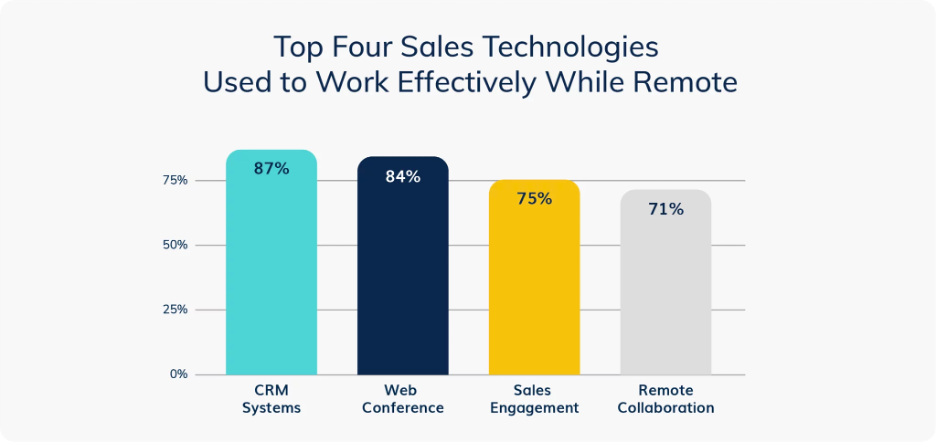The shift to a remote selling environment has accentuated the importance to companies of developing a standardized and consistent framework for their sales teams. It is particularly critical for onboarding new hires and ensuring on an ongoing basis that their salespeople are trusted and considered to be experts.
In the LinkedIn 2021 State of Sales survey buyers identified a number of behaviors from sellers that were immediate deal killers. Each of the top three revolved around the salesperson providing inaccurate information about their own company and demonstrating insufficient knowledge to establish trust:
48% complained of receiving misleading information about a product, its price etc.
44% referred to the salesperson not understanding their company and its needs
A staggering 43% didn’t even demonstrate a clear understanding of their own product or service *1
It is hard enough to educate salespeople on the product and industry and how to consistently hit their targets when onboarding, training and managing them in the office so these issues are even more pronounced when working remotely.
So how is the industry dealing with the remote working challenge?
Not very well according to a Sandler Research Center survey which revealed 67.5% of sales leaders reported not having received any training whatsoever on leading remotely. And it is therefore no surprise that 42% of frontline sales professionals have not even been adequately trained on how to sell remotely. *2
To lead successfully in a remote setting environment, sales managers must find ways to accelerate the speed of communication to provide their team with fast, transparent, and inclusive information on sales scenarios and suggested best practices. This gives remote salespeople purpose and direction, and it allows managers to delegate authority whilst still supporting quick actions and decision-making by their team members. For new hires an effective remote onboarding process ensures sales reps are ramped up faster to close deals sooner.
Customers expect connected, personalized engagement from sales teams and brands. The sales teams that can adapt quickly will be increasingly effective in a remote sales environment. Salespeople need to know what to say and what to send at each stage in the process.
Remote sales collaboration and synchronization doesn’t happen naturally. It’s dependent on an online environment that needs to be coached, nurtured, and empowered with the right tools.
How to streamline remote sales
1. Alignment: Success and speed come from co-ordinating around a sales playbook. This requires consistent messaging from the initial SDR outreach to the post demo follow up process, emails and standard company documents.
The playbook must be a constant work in progress with all team members encouraged to share their input on what is proving successful for them. It needs to be a living, breathing repository with the ability to refine and advance it quickly.
An example is standardizing email templates from the sales team so that core company documents can be accessed easily, there are standard prompts to reply to technical concerns, guidelines on messaging length and tone and consistency on pricing and discounts.
The key is to ensure shared information is accessible and updated regularly.
2. Tech tools: Research from “The New Normal: B2B Sales and Digital Transformation 2021” by Groove examined how technology is helping sales teams adapt to a remote-selling environment.

Interestingly it found that sales engagement technology was ranked even above remote collaboration as an effective sales tech tool and that almost half of salespeople have already been embracing the use of sales automation technology from home.
The Linked State of Sales Report 2021 found “77% of sales professionals say their sales organization plans to invest “significantly more” or “more” in sales intelligence tools.” *1
3. Collaborative mindset
Remote sales teams need to connect with each other in real-time through tools like Slack to streamline the sales process, assist each other to close deals and deliver a compelling customer experience. Online collaboration has to be as smooth as convenient as possible providing the ability to reach out to colleagues in seconds. When sales teams collaborate online they’re able to streamline workflows. They don’t need to rely on clunky email chains to get the information they need instantly.
The goal is to establish an open environment where your team members feel comfortable asking questions. Users should also be able to write direct messages to their managers or colleagues when they don’t want to ask a question in a group chat.
4. Performance monitoring
CRMs and related tools can give sales managers the real-time information they need to better manage, measure activity levels and their impact, and to coach and empower their remote teams.
Robust visibility around task management is an essential remote collaboration tool for holding sales team members accountable to management, staying on task, and ensuring their success.
The benefits of a synchronized sales approach
Managers benefit from immediate insights when everyone is working to the same procedures. There is no hiding place for the weaker performers.
By analyzing email open and response rates to easily accessible standard company templates it is possible to quickly discover valuable actionable insights on customer interest or lack thereof and adjust the core messaging accordingly.
Repeatable sales processes makes the job more predictable and less stressful especially when working independently and can save a significant amount of time pondering on the next action point. A collaborative mindset streamlines workflows, allowing sales professionals to save time spent on administrative tasks and spend more time sealing deals.

Students practice their moves in unison at a large martial arts school in China. Credit: Getty Images
Crucially it strengthens team spirit. Better communication and sharing amongst colleagues brings significant benefits:
It removes the unhealthy competitive aspect of sales where often there is a reluctance to share ideas.
It instills a sense of camaraderie and being aligned with colleagues especially in a remote working environment which can lead to feelings of disconnection from colleagues, isolation and loneliness.
It fosters a more productive environment and improves employee satisfaction by ensuring team members are supported and engaged with what they’re doing.
And ultimately a consistent sales process and service knowledge expertise helps the customer too. It boosts trust and enables a smoother and more efficient purchasing experience.
*1 https://www.linkedin.com/business/sales/blog/trends/the-linkedin-state-of-sales-report-2021
*2 https://www.sandler.com/blog/sandler-research-center-survey-highlights-challenges-for-sales-leaders-in-2021/
